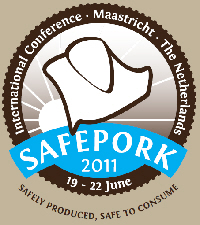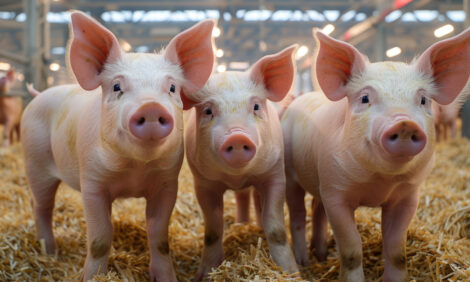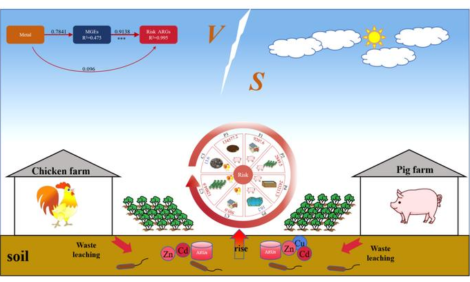



Proceedings of SafePork 2011
The 9th International Conference on the Epidemiology and Control of biological, chemical and physical hazards in pigs and pork was held in Maastricht, the Netherlands from 19 to 22 June 2011.
Below is a list of the paper presented at the conference. To view the papers or the full proceedings, click on the link given at the end.
Session 1. Modernisation of meat inspection
- Modernisation of meat inspection – Buncic
- Evaluation of the usefulness of carcass-weight, meat-percentage or identity of pig-producer in future-risk based meat inspection – Sandberg
- State of Art of meat inspection of pigs in the EU – Alban
- Risk-based meat inspection: Implementation experiences in Germany and integration of animal-oriented welfare criteria – Meemken
- Experiences with a risk-based meat inspection standard in pigs – Oorburg
Session 2. Epidemiology and control of bacterial pathogens I
- Application of the DIVA principle to Salmonella Typhimurium vaccines in pigs avoids interference with serosurveillance programmes – Leyman
- Transmission study of Salmonella in pigs with 3 intervention strategies – De Ridder
- A farm transmission model for Salmonella in pigs for individual EU Member States – Hill
- Risk-mitigation for antimicrobial resistance in Danish swine herds at a national level – Andreasen
- Association between Salmonella sp. and Yersinia enterocolitica infection in swine – Shaw
- Aerial dissemination of Clostridium difficile spores inside and outside a pig farm – Keessen
Session 3. Pathogenesis and molecular epidemiology
- Stress-induced Salmonella Typhimurium re-excretion by pigs is associated with cortisol induced increased intracellular proliferation in porcine macrophages – Verbrughe
- Genetic characterization of Yersinia enterocolitica collected from tonsils of slaughtered pigs – Denis
- The infection biology of pig-associated Salmonella – Crayford
- The use of quantitative Real-Time PCR to estimate Salmonella shed in faecal samples from naturally infected finishing pigs – Pires
- Salmonella Typhimurium interference with the humoral immune response of pigs – Van Parys
- Molecular epidemiology of Giardia duodenalis and Cryptosporidium spp on swine farms in Ontario, Canada – Farzan
Session 4. Detection
- A novel strategy to obtain quantitative data for modelling: Combined enrichment and real-time PCR for enumeration of salmonellae from pig carcasses – Malorny
- Improved risk-based strategies for disease management in the pig production chain – Kasper
- A selective chromogenic plate, YECA, for the detection of pathogenic Yersinia enterocolitica: specificity, sensibility and capacity to detect pathogenic Y. enterocolitica from pig tonsils – Denis
- Comparison of DNA extraction methods to detect Salmonella spp. from pig faeces and pork – Lettini
- Toxoplasma gondii prevalence in confinement pig herds measured by meat juice serology at slaughter – Blaha
- Development of a serological Luminex assay for Trichinella and Salmonella in swine – Fimme Jan van der Wal
Session 5. Antibiotic Resistance in particular MRSA
- Antimicrobial resistance in food-producing animals of public health concern. An overview of the current situation and options for control – Mevius
- Does nasal colonization with Methicillin-resistant Staphylococcus aureus (MRSA) in pig farmers persist after holidays from pig exposure? – Harlizius
- Investigation of MRSA transmission between pigs and the environment following intra-nasal inoculation – Gibbons
- Infection kinetics and host specificity of Methicillin-resistant Staphylococcus aureus (MRSA) in pigs – Szabo
- Methicillin Resistant Staphylococcus aureus (MRSA) in market age pigs on-farm, at slaughter and retail pork – Molla
- Quantitative exposure to livestock-associated MRSA ST398 of pig – Bos
Session 6. Epidemiology and control of bacterial pathogens II
- Observations on the distribution of monophasic Salmonella Typhimurium on pig farms in Great Britain – Davies
- Differences in risk factors for Salmonella serotypes in breeding pigs in Portugal – Correia
- Occurrence and epidemiology of Salmonella enterica in two slaughterhouses and cutting plants in Spain – Arguello
- EU-wide baseline survey on the prevalence of Salmonella in holdings with breeding pigs, 2008 – prevalence and factors associated with Salmonella positivity – Amore
- Occurrence of human enteropathogenic Yersinia spp. in Belgian pigs and contamination of pork carcasses during slaughter – Van Damme
- Microbial and serological effects of vaccination of sows and suckling piglets with an attenuated live Salmonella vaccine – Roesler
Session 7. Ways to reduce the use of antimicrobials
- The use of antimicrobials in food animals. The big picture – Blaha
- A new advisory tool to help practitioners reduce antibiotic consumption in pig herds – Bak
- The ResPig program as a tool for identifying risk factors affecting technical performance and post-mortem results at the slaughterhouse on Dutch pig farms and for restrictive antibiotic use – Geurts
- The link between biosecurity and production and treatment characteristics in pig herds – Laanen
- Garlic reduces effect of Actinobacillus pleuropneumoniae infection in pigs – Mul
Session 8. Miscellaneous
- Risk management with regard to dioxin residues in pork meat – Kuhne
- Risk of T. solium Transmission from Pork Slaughtered in Western Kenya – Doble
- HEV inactivation assessment using viable virus – Berto
- Alternative method for knife disinfection with INSPEXX 200 is more efficient than 82°C water – Heres
Session 9. Risk assessment/Public Health
- Public Health burden of exposure to microbes and parasites originating from pigs and pork – Havelaar
- Evaluation of the potential use of risk-based sampling to surveillance of antibacterial residues in Danish pork – Alban
- Modelling of Salmonella dynamics in the pig slaughterhouse – Swart
- A Quantitative Microbiological Risk Assessment for Salmonella transmission in pigs in individual EU Member States – Hill
- Ranking of food safety risks in pork from organic and free-range production systems – Sandberg
- National baseline surveys to characterise processing hygiene and microbial hazards of Australian culled sow meat, retail pork sausages and retail pork mince – Hamilton
Session 10. Control of antimicrobial use
- Modelling the use of different enforcement strategies to improve food safety – van Asselt
- Association between serological salmonella monitoring in breeding herds and meat-juice prevalence in sow herds with production of finishers – Dahl
- Relation between antimicrobial use and resistance in Belgian pig herds – Callens
- Salmonella in pigs and pork and their antimicrobial resistance: 10 years of surveillance in Germany – Tenhagen
- Use of heavy metals in swine feed and its association with the co-selection of metal tolerant and multi-drug resistant Salmonella – Gebreyes
Posters
A one-page summary of each of the 80 posters is included in the proceedings.
Further Reading
| - | You can view the full proceedings by clicking here. |
December 2011








